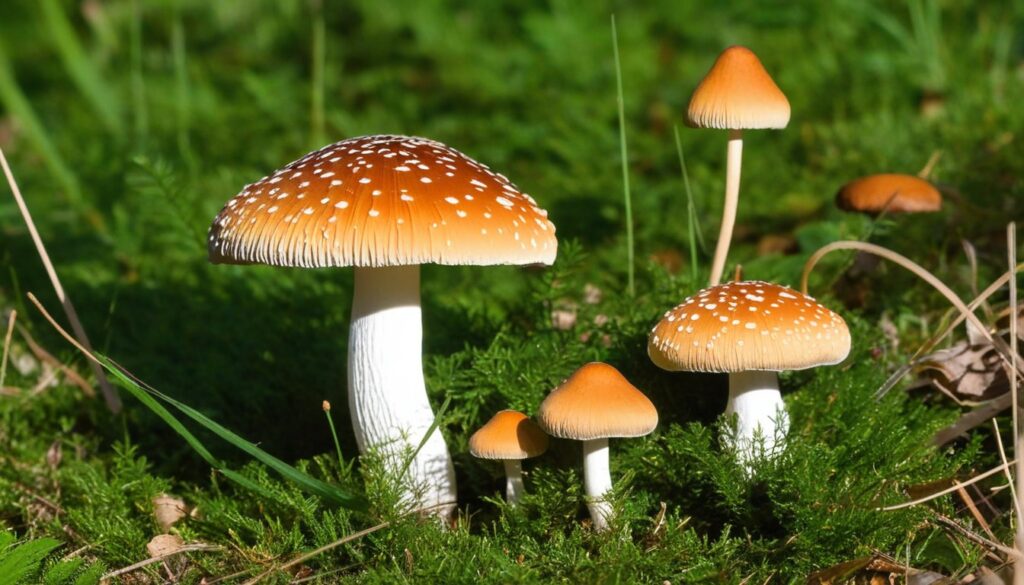If you’re lucky enough to live in Louisiana, you may have noticed a variety of mushrooms popping up in your yard. While some people overlook them, these mushrooms are worth paying attention to! Not only are they fascinating to observe, but they also play an important role in your backyard ecosystem.
In this article, we’ll guide you through the world of common yard mushrooms found in Louisiana. You’ll learn how to identify them, understand their characteristics, and discover how to safely enjoy them in your yard. Whether you’re a photographer, gardener, or forager, there’s something for everyone in this article.
Key Takeaways:
- Common yard mushrooms can be found in Louisiana and are worth discovering.
- Yard mushrooms have ecological benefits and contribute to soil health and nutrient cycling.
- Some yard mushrooms are safe to eat, but others can be toxic or even deadly. It’s important to learn how to identify them accurately.
- If you’re interested in cultivating mushrooms, there are several species suitable for growing in your backyard.
- Photographing yard mushrooms can be a fun and rewarding experience.
Understanding Yard Mushrooms
Yard mushrooms, like most fungi, are unique organisms that play an integral role in maintaining a healthy ecosystem in your backyard. These fascinating organisms have several defining characteristics that set them apart from other plants and animals in your garden.
The Basics: Characteristics and Growth Patterns
Yard mushrooms are reproductive structures produced by fungi that typically grow in warm and humid conditions. These organisms thrive in soil that is rich in organic matter, such as compost or decaying plant material. One unique characteristic of yard mushrooms is their spore-bearing structures, which they release into the air in hopes of propagating their species. While they may look similar to plants, yard mushrooms lack chlorophyll and cannot produce their food, relying instead on breaking down organic matter.
The Role of Yard Mushrooms in Your Backyard Ecosystem
Yard mushrooms play a crucial role in maintaining a healthy backyard ecosystem. They help break down dead plant material, returning nutrients to the soil and supporting the growth of other plants. They also provide habitat for wildlife, including insects and small animals. Mushrooms can even form mutually beneficial relationships with plant roots, called mycorrhizae, that improve plant growth and health.
“Yard mushrooms play a crucial role in maintaining a healthy backyard ecosystem.”
Understanding the basics of yard mushrooms is a crucial first step in identifying and appreciating these fascinating organisms. In the next section, we will delve into the specific types of yard mushrooms you may find in Louisiana.
Identifying Common Yard Mushrooms
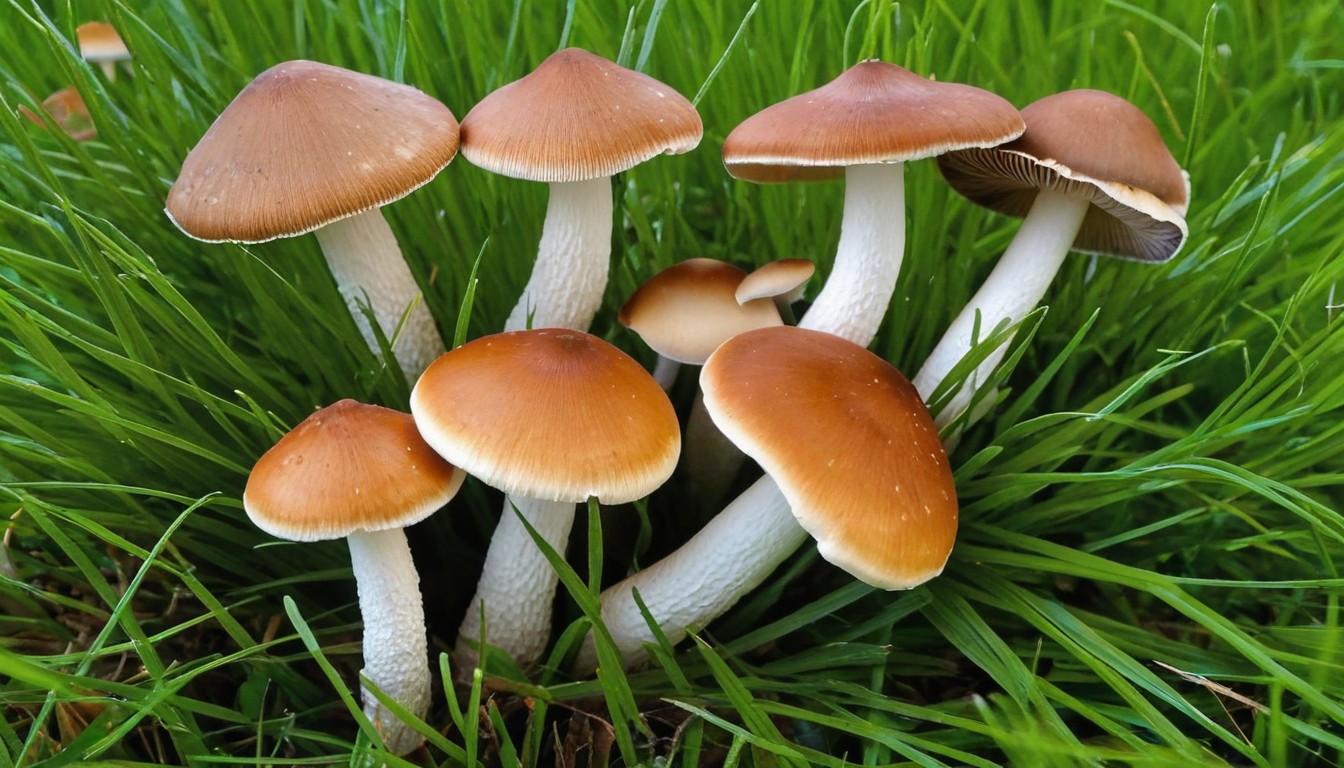
Louisiana is home to a variety of unique yard mushrooms that can be found in residential landscapes. It is important to be able to identify these mushrooms accurately to avoid consuming any toxic species. Here are some of the most common types of yard mushrooms you may encounter:
|
Mushroom Name |
Description |
Distinguishing Features |
|---|---|---|
|
Common Ink Cap |
A small, delicate mushroom |
Long, slender stem with a bell-shaped cap that turns black and dissolves into an inky fluid |
|
Fairy Ring Mushroom |
Circular mushroom clusters |
Cap has brownish scales, white gills, and a smooth stem |
|
Stinkhorn |
Elongated, phallic-shaped mushroom |
Orange-red cap with a slimy texture and strong odor |
|
Slime Mold |
A gelatinous, mold-like organism that appears slimy and yellow |
No typical mushroom features, looks more like a wet dog’s breakfast |
Remember that not all yard mushrooms are safe to consume and some can be dangerous or even deadly. If you are unsure about a particular mushroom, always err on the side of caution and avoid consuming it.
To accurately identify a yard mushroom, take note of its characteristics, including its size, shape, color, texture, and odor. Consulting a guidebook or seeking advice from an experienced mycologist can also help you make an accurate identification.
Now that you know how to identify common yard mushrooms found in Louisiana, you can keep a lookout for fascinating fungi in your own backyard.
Edible Yard Mushrooms in Louisiana
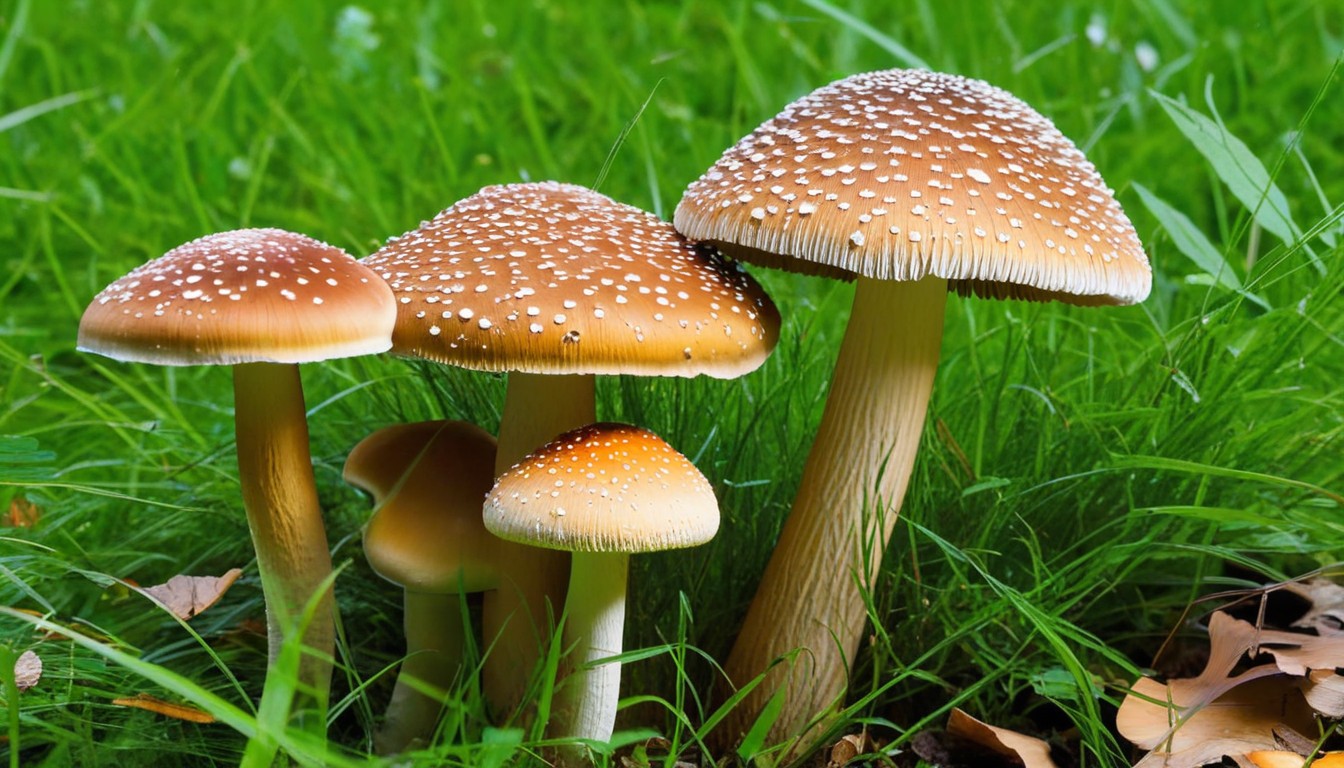
If you are interested in adding some unique flavors to your meals, consider foraging for edible yard mushrooms in Louisiana. Here are some species worth looking for:
|
Mushroom Name |
Description |
Edibility |
|---|---|---|
|
Morel |
This cone-shaped mushroom has a honeycomb-like texture and is often found near dead trees. |
Edible |
|
Chanterelle |
This vase-shaped mushroom has a wavy, fleshy cap that ranges in color from yellow to orange. |
Edible |
|
Puffball |
This round, white mushroom can grow to be the size of a basketball and has a spongy texture. |
Edible when young and firm |
|
Chicken of the Woods |
This shelf-like mushroom has bright orange and yellow colors and grows on trees. |
Edible |
|
Black Trumpet |
This funnel-shaped mushroom has a black exterior and a folded, tan interior. |
Edible |
When hunting for edible yard mushrooms, make sure you properly identify them and research safe harvesting practices. If you’re new to foraging, consider going with an experienced guide or taking a course. Once you have your bounty, try using them in recipes like mushroom risotto, omelets, or stir-frys to add a delicious and unique touch to your meals!
Toxic Yard Mushrooms to Avoid
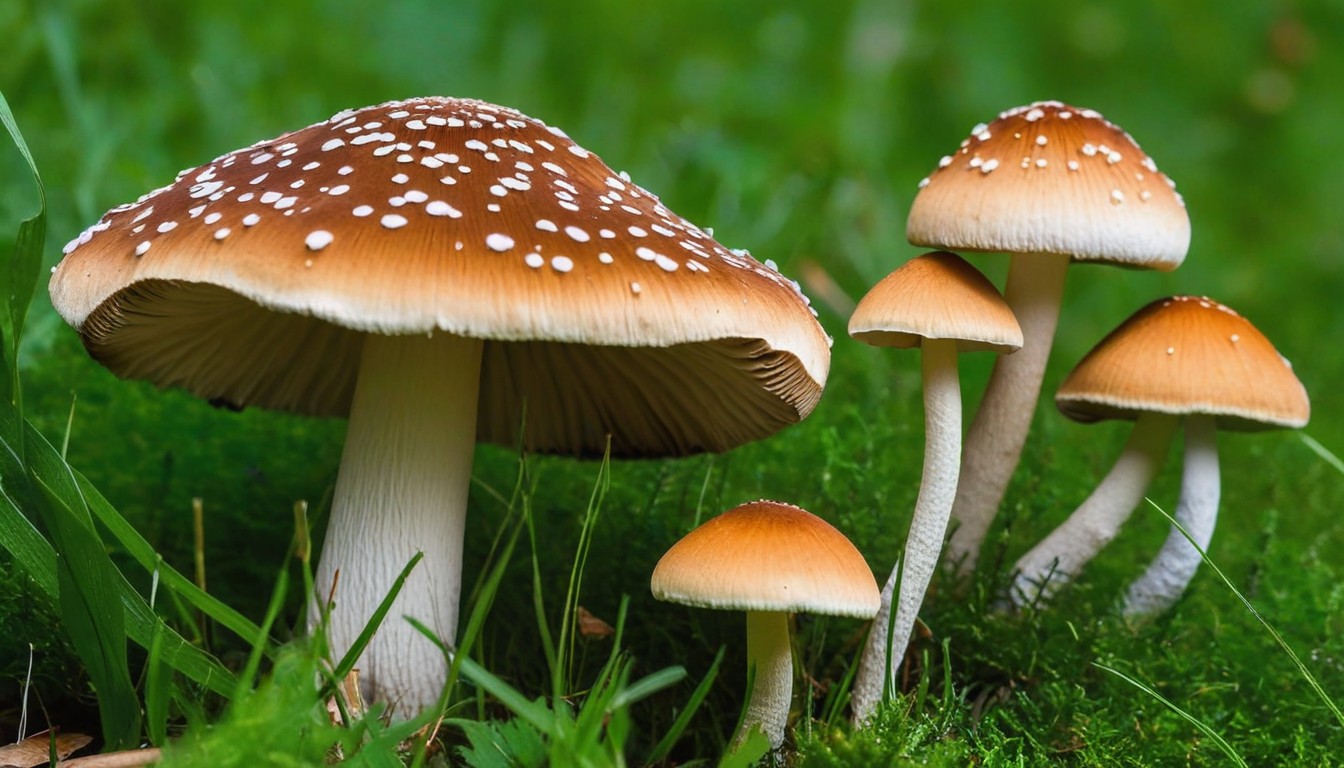
While exploring the world of yard mushrooms can be fascinating, it is essential to be aware of the toxic species that can be dangerous to humans and pets. Some toxic mushrooms found in Louisiana include…
|
Toxic Species |
Distinguishing Features |
|---|---|
|
Amanita |
Has a white stalk with a skirt-like ring and a cap with white gills. |
|
Lepiota brunneoincarnata |
Has a reddish-brown cap and white spores. |
|
Galerina marginata |
Has a brownish-yellow cap and stem with dark-edged gills. |
To avoid accidental ingestion of toxic yard mushrooms, we recommend the following tips:
- Do not consume mushrooms unless you have expert knowledge in their identification.
- Do not rely solely on mushroom identifying apps or field guides.
- When in doubt, err on the side of caution and do not consume.
- Do not allow pets to consume yard mushrooms.
- Remove any unknown or suspicious mushrooms from areas accessible to pets and children.
By following these safety tips and being aware of the toxic yard mushrooms to avoid, you can enjoy the world of yard mushrooms without putting yourself or your loved ones in harm’s way.
Growing Yard Mushrooms
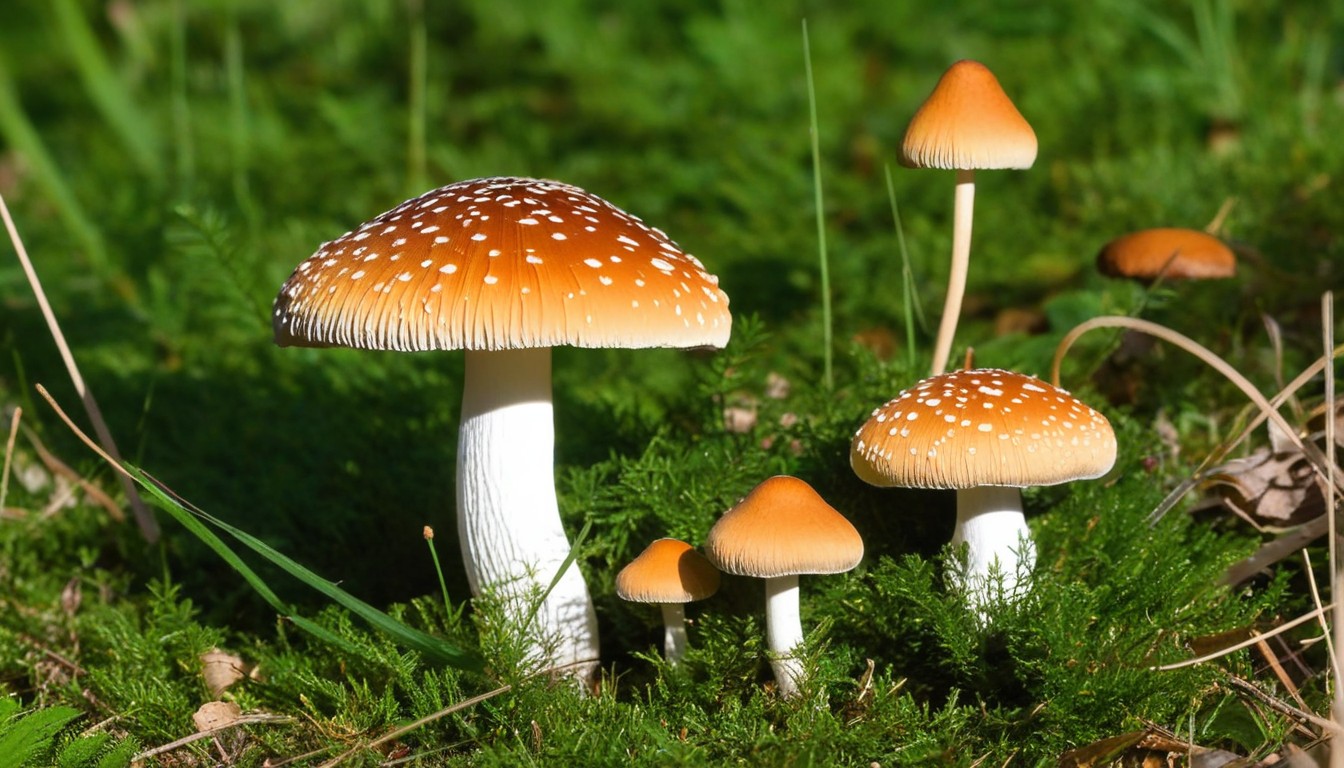
If you’re interested in cultivating your own yard mushrooms, there are a few things you’ll need to consider. First and foremost, you’ll need to choose the right mushroom species to grow. Some popular options for beginners include oyster mushrooms, shiitake mushrooms, and lion’s mane mushrooms.
|
Species |
Suitable growing conditions |
|---|---|
|
Oyster mushrooms |
Temperatures between 55-75°F, high humidity, and a substrate of straw or sawdust. |
|
Shiitake mushrooms |
Temperatures between 50-64°F, high humidity, and a substrate of hardwood logs or sawdust. |
|
Lion’s Mane mushrooms |
Temperatures between 60-75°F, high humidity, and a substrate of sawdust or hardwood. |
Once you’ve selected your mushroom species, you’ll need to create the right growing conditions. Most mushrooms require a humid environment and a nutrient-rich substrate to grow in. You may need to adjust your watering schedule or install a misting system to maintain the necessary level of humidity. In terms of substrate, there are many options available, including straw, sawdust, hardwood logs, and compost. Do some research to determine which substrate is best suited for your selected species.
Finally, be patient! Growing mushrooms can be a slow process, and it may take several weeks or even months for your fungi to mature. However, with some care and attention, you may soon be enjoying a bountiful harvest of tasty, home-grown mushrooms.
Benefits of Yard Mushrooms
Yard mushrooms are often associated with being a nuisance but they actually play a vital role in your garden’s ecosystem. These fungi help break down organic matter, releasing nutrients such as nitrogen, phosphorous, and potassium back into the soil for use by other plants. Additionally, the presence of yard mushrooms correlates with the overall health of your soil. The more mushrooms you see, the healthier your soil is likely to be.
Another benefit of yard mushrooms is their ability to form mutually beneficial relationships with plants. Mycorrhizal fungi, for example, form symbiotic relationships with the roots of plants, helping them absorb water and nutrients. In return, the fungi receive carbohydrates produced by the plant through photosynthesis.
Lastly, yard mushrooms can serve as indicators of environmental conditions in your garden. Some species are highly sensitive to pollution and heavy metals, while others thrive in soil with a high organic matter content. By paying attention to the types of mushrooms you see in your yard, you can get a better understanding of your garden’s overall health and make informed decisions about how to care for it.
Common Myths about Yard Mushrooms
Yard mushrooms have long been the subject of myths and misconceptions. In this section, we debunk some of the most common myths to set the record straight.
Myth: All Yard Mushrooms Are Poisonous
The truth is, not all yard mushrooms are poisonous, but it’s important to know which ones are edible and which ones are toxic. In Section 4, we discuss some of the edible yard mushrooms found in Louisiana, and in Section 5, we provide information on toxic species to avoid.
Myth: Yard Mushrooms Kill Grass
Many people believe that yard mushrooms kill grass, but this is a misconception. In fact, yard mushrooms can actually benefit your lawn by breaking down organic matter and returning nutrients to the soil. However, if you prefer a manicured lawn, you may want to remove them for aesthetic reasons.
Myth: Yard Mushrooms Repel Insects
Some people believe that yard mushrooms repel insects, but there is no scientific evidence to support this claim. In fact, some mushrooms can attract insects, so it’s important to be aware of the species growing in your yard and take appropriate action if necessary.
Myth: Yard Mushrooms Are Harmful to Pets
While some species of yard mushrooms can be toxic to pets if ingested, not all mushrooms are dangerous. In Section 8, we provide information on pet safety around yard mushrooms and advise on how to prevent accidental consumption.
Myth: Touching Yard Mushrooms Can Cause Allergic Reactions
While some people may be allergic to certain species of mushrooms, simply touching them is unlikely to cause an allergic reaction. However, it’s always a good idea to wear gloves when handling mushrooms to prevent any irritation or skin reactions.
“By exploring these myths, we hope to dispel any misconceptions about yard mushrooms and promote a better understanding of these fascinating fungi.”
Photographing Yard Mushrooms
If you’ve ever strolled through your backyard and spotted a particularly striking yard mushroom, you may have been tempted to capture its beauty through photography. Below, we offer a few tips and tricks for photographing yard mushrooms.
1. Get Up Close and Personal
To truly capture the unique features of a yard mushroom, it’s important to get up close and personal. Consider investing in a macro lens for your camera to allow for extreme close-ups. Get creative with your angles and perspectives to showcase the most striking attributes of the mushroom.
2. Use Natural Light
Natural light can produce stunning results when photographing yard mushrooms. Look for soft, diffused light on an overcast day to avoid harsh shadows. Early morning or late afternoon sunlight can also provide a warm, glowing effect.
3. Experiment with Composition
Experimenting with composition can yield interesting and unique photographs of yard mushrooms. Try capturing the mushroom from different angles, focusing on the textures and patterns of the cap and stem. Incorporate other elements of the environment, such as fallen leaves or other fungi, to add depth and interest to the image.
4. Don’t be Afraid to Edit
After capturing your images, don’t be afraid to edit them to enhance their beauty. Adjust the brightness, contrast, and saturation levels to bring out the vibrancy of the mushroom’s colors. Use selective focus and blurring techniques to draw attention to specific areas of the image.
With a little bit of patience and a keen eye for detail, you can create stunning photographs of the yard mushrooms in your backyard.
Conclusion
In conclusion, exploring the world of common yard mushrooms in Louisiana can be a fascinating experience. From understanding the basics of yard mushrooms to identifying different species and discovering their edibility, there is a lot to explore. You can even cultivate your very own mushrooms right in your backyard. Plus, these mushrooms offer several ecological benefits, making them an essential part of your garden’s ecosystem.
While it’s important to be aware of the toxic yard mushrooms to avoid, there is no need to fear these fascinating fungi. With the knowledge and tips provided in this article, you can confidently identify and appreciate the yard mushrooms that grace your lawn.
So, get your camera ready and start snapping some stunning mushroom photos. Whether you are a mushroom enthusiast or a curious gardener, there’s never been a better time to explore the world of common yard mushrooms in Louisiana. Happy mushroom hunting!
FAQ
What are common yard mushrooms?
Common yard mushrooms refer to the fungal species that are commonly found in lawns and gardens. They can vary in size, shape, and color.
How can I identify common yard mushrooms in Louisiana?
Identifying common yard mushrooms requires careful observation of their physical characteristics such as cap shape, color, gills, and stalk. Additionally, using a field guide or consulting with a mushroom expert can also be helpful.
Are there any edible yard mushrooms in Louisiana?
Yes, there are some edible yard mushrooms in Louisiana. However, it is crucial to have proper knowledge and guidance before consuming any wild mushrooms to avoid potential risks.
What are some toxic yard mushrooms that I should avoid?
Louisiana is home to various toxic yard mushrooms, such as Amanita species. It is essential to know the distinguishing features of these toxic mushrooms and avoid consuming them.
Can I cultivate yard mushrooms in my own backyard?
Yes, you can cultivate yard mushrooms in your backyard. By creating suitable growing conditions and using specific mushroom species, you can grow your own mushrooms and enjoy their harvest.
What are the benefits of yard mushrooms?
Yard mushrooms play a vital role in the ecosystem by contributing to soil health, nutrient cycling, and biodiversity. They help break down organic matter and enhance the overall health of your garden.
Are there any common myths about yard mushrooms?
Yes, there are several myths and misconceptions about yard mushrooms, such as the belief that they are harmful to lawns. This section debunks common myths and provides accurate information about yard mushrooms.
How can I capture stunning photographs of yard mushrooms?
To capture beautiful photographs of yard mushrooms, it is important to consider lighting, composition, and angles. Patience and practice can help you improve your mushroom photography skills.

